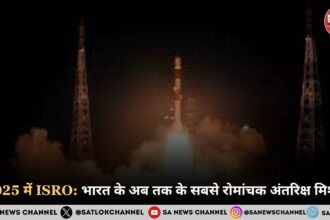Robot Army: DRDO is trying to level up the Indian military by building humanoid robots that can effectively carry out frontline risky operations like reconnaissance, bomb diffusion, and combat. The primary purpose is to reduce human casualties in dangerous operations. While these robots will assist in risky missions, they will remain tools under complete human control, not independent battlefield replacements.
What are Humanoid Robots?
Humanoid robots mimic the human body in form and movement. They typically have a head, torso, arms, and legs just like a human. These humanoid robots can walk, talk, lift, and operate under command.
DRDO is developing humanoid robots
The Defence Research and Development Organisation (DRDO) is planning to develop advanced humanoid robots for military support operations with the purpose of combining human agility with mission-ready capabilities. Unlike autonomous systems, these humanoids will function strictly under human command, ensuring ethical use and reducing risk to soldiers in dangerous scenarios.
Robot Army: India recently witnessed the debut of its indigenous humanoid robot prototype developed by DRDO’s Research and Development Establishment (R&DE) in Pune. The robot is capable of performing human-like movements with 24 degrees of freedom 7 in each arm, 4 in its grippers, and 2 in its head. It’s also equipped with real-time SLAM (Simultaneous Localization and Mapping) technology for autonomous navigation, and it can perform complex tasks like turning valves, opening doors, and lifting obstacles.
Why Humanoid Robots?
The goal of the Indian Defence Ministry is to combine battlefield-ready capabilities with human agility and to ensure these machines work under human command. This will help reduce soldier casualties during high-risk operations like bomb disposal, reconnaissance, and rescue missions.
What makes these robots different from existing military robots?
The new robots being developed by DRDO stand out due to their bipedal locomotion, allowing human-like movement across various terrains. They also feature advanced SLAM navigation, enabling them to operate effectively in unknown or dynamic environments.
With 24 degrees of freedom, they can perform complex tasks with enhanced flexibility. These humanoid robots will also have integrated AI capabilities that allow them to recognize and interact with objects, improving situational awareness. Additionally, their fall-recovery and self-righting mechanisms ensure better resilience in the field.
Deadline:
With three years left, DRDO is fine-tuning the bot’s ability to understand and execute complex commands. If successful, India could join the elite league of nations deploying humanoids in combat potentially changing the face of modern warfare.
Robots May Save Lives, But Only True Worship Can Save the Soul – Sant Rampal Ji Maharaj
Great Spiritual Leader Sant Rampal Ji Maharaj Ji emphasizes that while technological progress like DRDO’s humanoid robots may serve to reduce human casualties, they do not solve the deeper purpose of human life.
“The aim of human life is not to improve warfare but to attain salvation by worshipping the Supreme God as per the scriptures. No machine or robot can save a soul from the cycle of birth and death. Only by taking Naam (initiation) from a Tatvdarshi Saint and doing true devotion can one escape Kaal Lok and go to Satlok, the eternal place of peace.”
Sant Rampal Ji often reminds us through the Bhagavad Gita Chapter 15 Verses 1–4 that this world is temporary and full of suffering, and that one must search for the Supreme God Kabir Saheb and the way to return to our eternal home.
He would urge people to invest their time in devotion and not to get too entangled in the illusion (Maya) of science and material progress, which cannot provide permanent happiness or liberation.
FAQs about DRDO humanoid robots:
1. What is the work of DRDO?
DRDO is an organization responsible for the development of advanced defence technologies.
2. Is DRDO private or government?
DRDO is a government organization and the R&D wing of the Ministry of Defence.
3. Will DRDO humanoid robots replace human soldiers?
No, DRDO’s humanoid robots are designed to assist rather than replace human soldiers.
4. Are other countries also using humanoid robots in defence?
Yes, countries like the US, China, and South Korea are exploring humanoid and robotic systems for defence and security operations.
5. Does India already have robots in defence?
Yes, India is using robots like Daksh for bomb disposal and RoboSen for surveillance, but humanoid combat robots are still in the R&D phase.
6. What is the Daksh robot used for?
Daksh is a remote-controlled robot developed by DRDO to safely locate, handle, and destroy hazardous objects, especially explosives.









